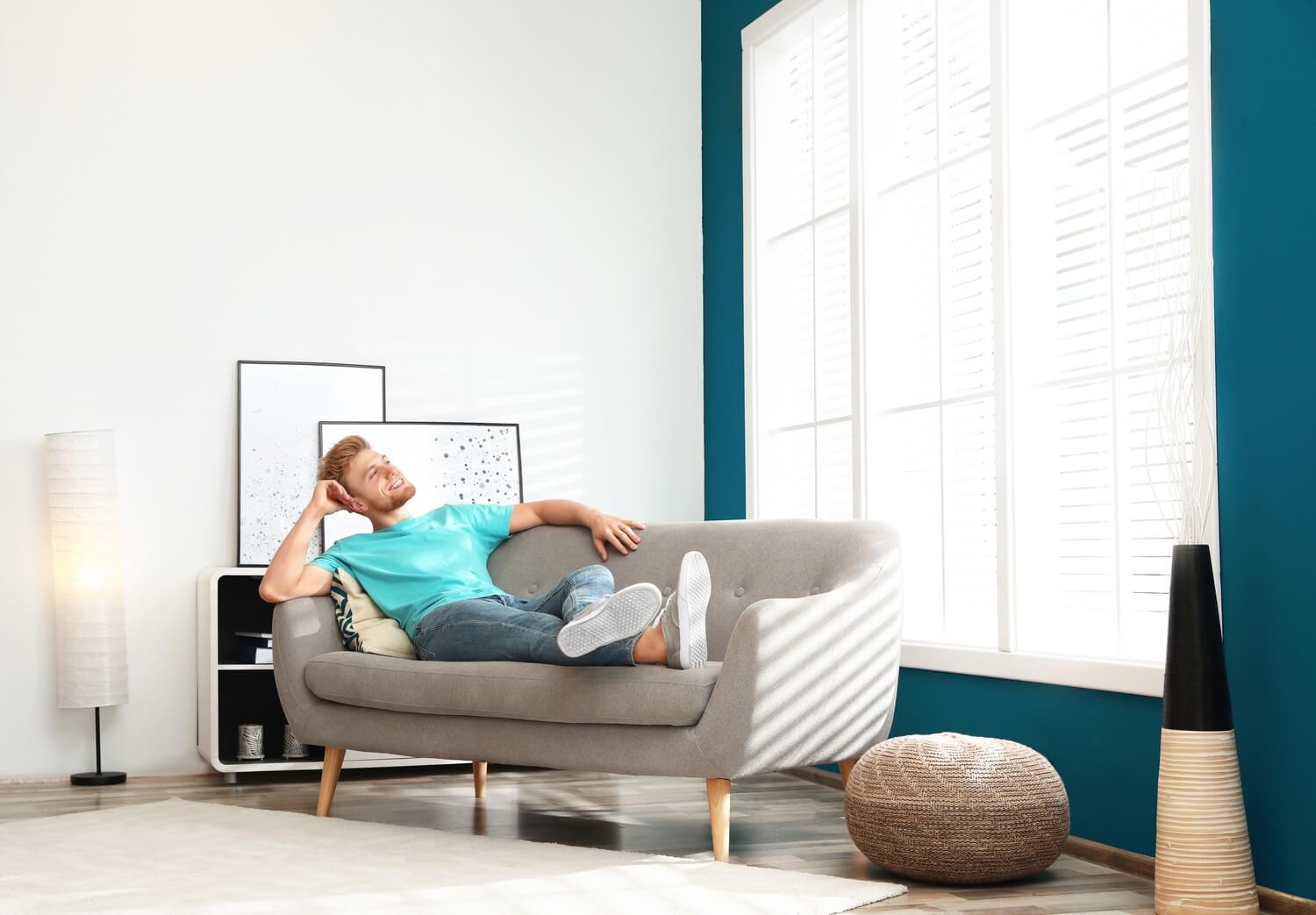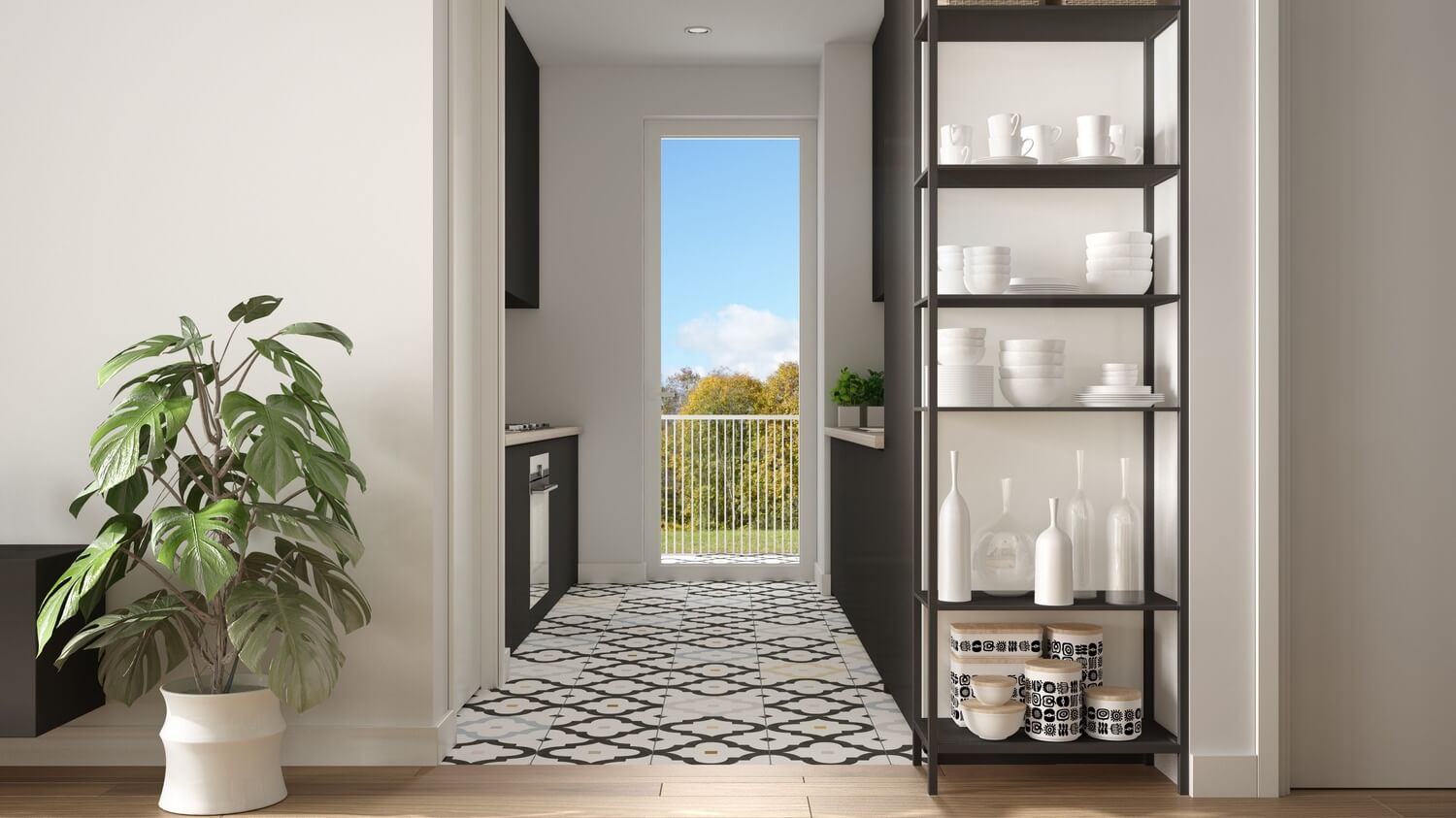11 Easy Ways To Keep Your Apartment Cool This Summer

The summer heat can turn an apartment into a sauna, especially if you're dealing with older buildings, limited airflow, or a tight budget. While central air conditioning is great, not every apartment comes with it—and blasting a window unit 24/7 can spike your energy bills fast. If you're looking for ways to cool things down without breaking the bank or overloading the AC, here are eleven practical strategies to help make your apartment more livable during the summer months.
1. Focus on Blocking Heat Gain, Not Just Cooling Air
Reducing the heat coming in is more effective than fighting it once it's already inside. Start with your windows. Apply window tint or reflective film to bounce solar energy back outside. It might seem like a small step, but it can reduce heat gain dramatically, especially in apartments that get a lot of direct sunlight.
Pair that with blackout curtains or thermal blinds. During the hottest part of the day, keep them closed to limit the sun's effect. Use lighter-colored curtains, too—darker colors absorb heat.
If your apartment building allows it, consider adding exterior shade with awnings or balcony umbrellas. Anything that prevents the sun from hitting the glass directly will make a difference.
2. Use the Right Cooling Equipment for Your Space
Cooling an apartment isn't always straightforward. Some buildings restrict window units. Others have old wiring or awkward layouts that make installation tricky. That's where a bit of planning—and the right type of cooling system—can save you a lot of frustration.
If your space can't handle permanent installations, a window unit may still work if it's compact and easy to secure. For apartments with tighter restrictions, evaporative coolers or fan-based systems might be your best bet, especially in drier climates.
When the setup gets more complicated—say, irregular window frames or outdated outlets—it's worth talking to someone who knows how to work within those constraints. First Call Jewel and other experienced HVAC contractors have dealt with the quirks that come with apartment buildings, and they can help figure out what's feasible without violating lease terms or overloading circuits.
3. Take Advantage of Natural Ventilation When You Can
Hot air rises, which means opening your windows at night—especially in upper-level apartments—can invite a cool breeze inside while helping push warm air out. Use window fans facing outward in one part of the apartment and inward in another to create a steady flow.
Make the most of cross ventilation by opening windows on opposite sides of your space. You may not feel it instantly, but the temperature will start dropping as stale, hot air is replaced with cooler outdoor air.
Close the windows early in the morning before the temperature starts climbing again. That traps cooler air inside and prevents hot air from rushing back in.
4. Control Internal Heat Sources
It's easy to overlook how much heat your own appliances give off. Traditional bulbs, especially incandescent bulbs, waste a lot of energy by releasing heat. Swapping them for LED bulbs not only lowers energy costs but also keeps rooms from warming up unnecessarily.
Rethink your cooking habits, too. Ovens and stovetops generate more heat than you might think, and that heat lingers. Use your microwave or make meals that don't require cooking. If you need to use the stove, turn on your kitchen exhaust fans to pull hot air out faster.
Laundry appliances and computers also contribute to indoor heat. Run them at night or early in the morning to avoid heating up your space during peak hours.
5. Cool Yourself First, Then the Space
Sometimes it's more effective to focus on keeping your body temperature down rather than the entire apartment. Use cold water to your advantage. Soak a towel in cool water and drape it around your neck. Keep a spray bottle of cool water in the fridge and mist your arms and legs when you're feeling overheated.
A cold bath or a quick shower can reset your body temperature after being outside. Even holding ice packs or frozen water bottles against your wrists or neck can make a big difference. These tricks won't cool the room, but they'll help you feel a lot better in it.
If you sleep hot, toss a couple of frozen water bottles in a pillowcase and place them at the foot of your bed before you go to sleep.
6. Get Strategic With Fans
Ceiling fans, box fans, and desk fans don't technically cool the air, but they do help your body release heat through evaporation. Use them to direct airflow where it matters. For example, placing a fan near your bed can help at night, while a box fan near the kitchen can push hot air out after cooking.
Point fans toward windows during the day to push warm indoor air outside. Then, reverse the setup at night to pull in cooler air.
You can also make a DIY cooling system by placing a bowl of ice cubes or frozen water bottles in front of a fan. The breeze picks up the chill from the ice and helps bring down the immediate area's temperature.
7. Adjust How You Use Your Space
If one part of your apartment gets especially hot, avoid it during peak daylight hours. Rearrange furniture so you're not sitting near a sun-exposed window in the afternoon. Move your bed or couch away from heat sources or closed-off areas that trap warmth.
Close off unused rooms to keep your portable air conditioner or window units working more efficiently in your main living spaces. Cooling fewer square feet means lower utility bills and more consistent temperatures.
In larger spaces, consider creating zones with curtains or temporary dividers. That way, you can concentrate your cooling efforts where they matter most, instead of trying to bring the entire apartment down to a comfortable temperature all at once.
8. Add Indoor Plants That Help With Cooling
Some indoor plants do more than just look good. Snake plants, for example, release oxygen and can subtly contribute to cooling by increasing humidity and improving airflow. They're low-maintenance and do well in indirect light, making them ideal for most apartments.
Plants near windows can also absorb some of the heat that would otherwise warm up your space. Just be careful not to block airflow if you're trying to get cross-ventilation going.
Green spaces like this don't replace air conditioning, but they make the environment feel fresher, more breathable, and less stuffy—especially on hot summer days.
9. Rethink Your Bedding and Sleep Setup
Heat can disrupt your sleep more than you realize. When your body temperature stays elevated at night, you wake up more often and feel groggy the next day. One way to bring your bedroom temperature down is to switch to lightweight, breathable bedding.
Use cotton or linen sheets instead of polyester blends. These fabrics allow for better airflow and don't trap body heat. You can also try buckwheat pillows—they don't hold heat like traditional foam and offer better ventilation.
Consider sleeping lower to the ground if you're in a loft or raised bed. Hot air rises, so moving your mattress or sleeping area closer to the floor can knock off a couple of degrees.

10. Use Your Doors Wisely
Doors play a bigger role in indoor temperature than most people think. If you leave every door open, air circulation becomes random and uneven. On the other hand, closing certain doors helps trap cool air where you need it—especially in rooms you're using actively.
For example, during the hottest part of the day, close the doors to unoccupied rooms so the cool air from your window units or portable air conditioner doesn't drift into unused spaces. This also prevents heat from those areas from leaking into your main living zones.
If your bathroom has a ceiling vent or exhaust fan, keep the door shut and run the fan for a few minutes after a cold bath or shower. It helps pull humid air out, which can keep nearby rooms from feeling muggy.
At night, you can reverse the logic. Open interior doors to allow cool air from outside to reach more of your apartment while you're sleeping.
11. Cook Smarter Without Skipping Meals
Avoiding heat doesn't mean you have to settle for takeout every night. It just means being smarter about when and how you cook.
Small kitchen appliances like slow cookers, pressure cookers, or toaster ovens emit far less heat than a full-size oven or stovetop. They're also more energy efficient. You can plug them in near a window or on a balcony if allowed, so heat disperses instead of sticking around.
Cooking earlier in the day helps, too. Prep lunch in the morning when it's cooler, then eat leftovers for dinner. This keeps your apartment cooler during peak heat hours, which usually run from late afternoon into the early evening.
And if you're making something simple like pasta or rice, boil water with the lid on and keep kitchen exhaust fans running until the steam clears out.
Conclusion
Cooling your apartment during the summer months doesn't have to mean running the AC all day or sweating through your couch. A few targeted changes—like managing heat gain, swapping out traditional bulbs, using blackout curtains, and controlling body heat—can make a huge difference. Try out a few strategies at a time and see what sticks. Each fix may seem small on its own, but together they add up to a noticeably cooler, more comfortable space.
Published 4/3/25